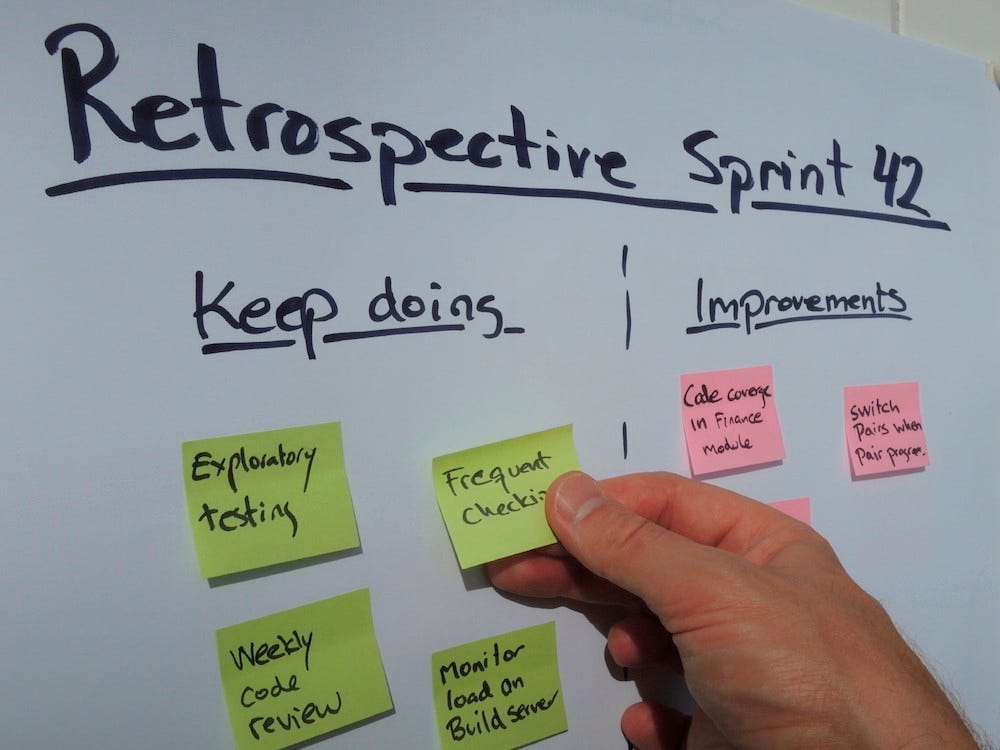
There are a whole bunch of other methods actively discussed at . A great resource for people who want to delve deeper into the topic is Esther Derby's Agile Retrospectives: Making Good Teams Great. We recommend running a retrospective with your team every couple of weeks.
#SCRUM RETROSPECTIVE HOW TO#
As Jeff points out in the video, in the next Sprint Review the issue should be revisited to ensure that progress has been made toward completing the Definition of Done for the identified improvement. Identify how to improve teamwork by reflecting on what worked, what didnt, and why. The Team then discusses what it thinks are the underlying causes and agrees on the single most important improvement (the kaizen) to try in the next Sprint. By putting a check mark next to repeated items a consensus starts to emerge. Sprint Restrospective Regardless of how good your Scrum team is, there is always room for improvement. One way, illustrated in the slides, is to structure the Retrospective is to draw four columns on a whiteboard, labeled:Įach member of the Team adds items to the lists. However, there are other ways to approach it.

There are many different ways to run Retrospectives. If the Team tries to implement multiple changes, it will be difficult to figure out which process change solved the real issue and led to increased performance. It’s important to just choose one change. If performance did not, the Team needs to develop another hypothesis on what the root cause may be. If Team performance improved, the change should be kept. That process improvement, sometimes called the kaizen, should be put into the next Sprint’s Backlog, with acceptance tests. At the next Sprint Review the issue is revisited to see what difference, if any, the process change has made. And the rest of the team has to have the maturity to hear the feedback, take it in, and look for a solution rather than getting defensive.īy the end of the meeting the Team and the Scrum Master should agree on one process improvement that they will implement in the next Sprint. People have to have the fortitude to bring up the issues that are really bothering them in a way that is solution oriented rather than accusatory.

The Team should ask questions like: Why did that happen that way? Why did we miss that? What could make us faster? The idea here is to examine people and relationships as well as process and tools. It is crucial that the Team take responsibility for its outcomes as a Team, and not as individuals. The key thing to remember is that the team is not seeking someone to blame but rather looking at the process. To be effective, this meeting requires a certain amount of emotional maturity and an atmosphere of trust.


 0 kommentar(er)
0 kommentar(er)
